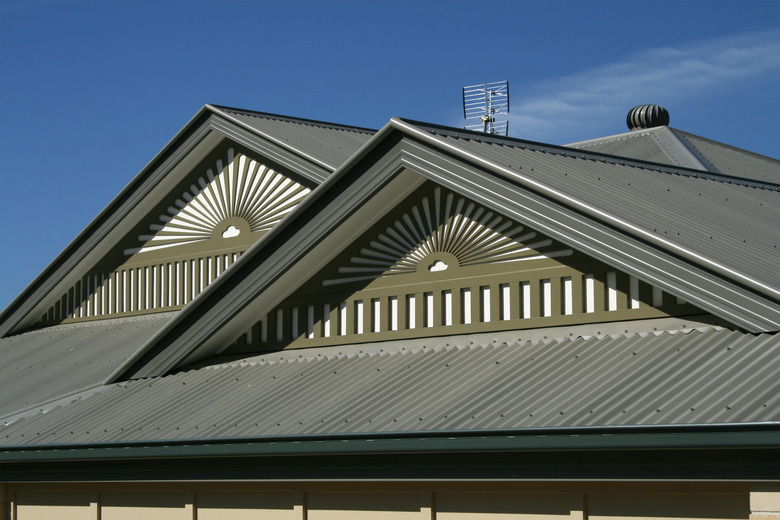How To Lap Metal Roofing
When you're repairing or installing a new metal roof, it's important to know how to properly lap the roofing material. Doing so can prevent water damage to the underlying structure and will help with insulating the building. Fortunately, with a few safety precautions and some basic information, metal roof installation is a very accessible project.
Before You Begin
If you'll be working on a roof, it's essential that you take several safety precautions. Never conduct work on a day when it's raining or snowing, as this could create slippery conditions that might lead to injury. Clear leaves and other debris from the roof before you get started, both for your safety and to keep them away from the area where you'll be working. In addition, don't attempt roof work when thunder or lightning is present. Steer clear of any overhanging power lines, and ask another adult to spot you when you climb up and down the ladder. Having someone else present throughout the entirety of your roofing project is ideal. Lastly, use heavy gloves when handling sheets of metal roofing material, as they can be sharp and lead to cuts.
How to Lap Metal Roofing
A basic rule of thumb for installing metal roofing is that the piece of roofing higher up on the slope should always overlap the one below it. This helps to prevent water infiltration. Because of this, you should start at the lowest part of the slope and work upward. Additionally, panel installation should start at the gable end of the roof opposite the prevailing rain-bearing wind. This is an essential consideration, as failure to do so can force driven rain under the laps.
Beginning at the roof edge, measure one panel width and chalk a line from the ridge to the eave. Then, situate the leading edge of the first panel along this line. Make sure the panel is square to the roof line.
On the eave side of the roof, aim to overhang the panels by 1 to 1.5 inches. If you're installing a metal roof on a home without gutters, you can overhang the panels by twice that amount.
Sealing Roofing Panels
Basic lap joints are usually given a layer of sealant in between the panels during installation. Most metal panel seams will use a butyl-type sealant. This is ideal for lapping because the sealant stays sticky rather than hardening. Review the manufacturer instructions that accompany your metal roofing materials to verify the proper type of sealant that you should use.
You may then use fasteners to hold the tin roofing sheets in place. These fasteners, often called lap screws, may also be referred to as stitching screws.
Some roofing materials may be constructed with snap seams or mechanical seams, which don't require you to overlap them. Instead, these seams fit into one another like puzzle pieces.
